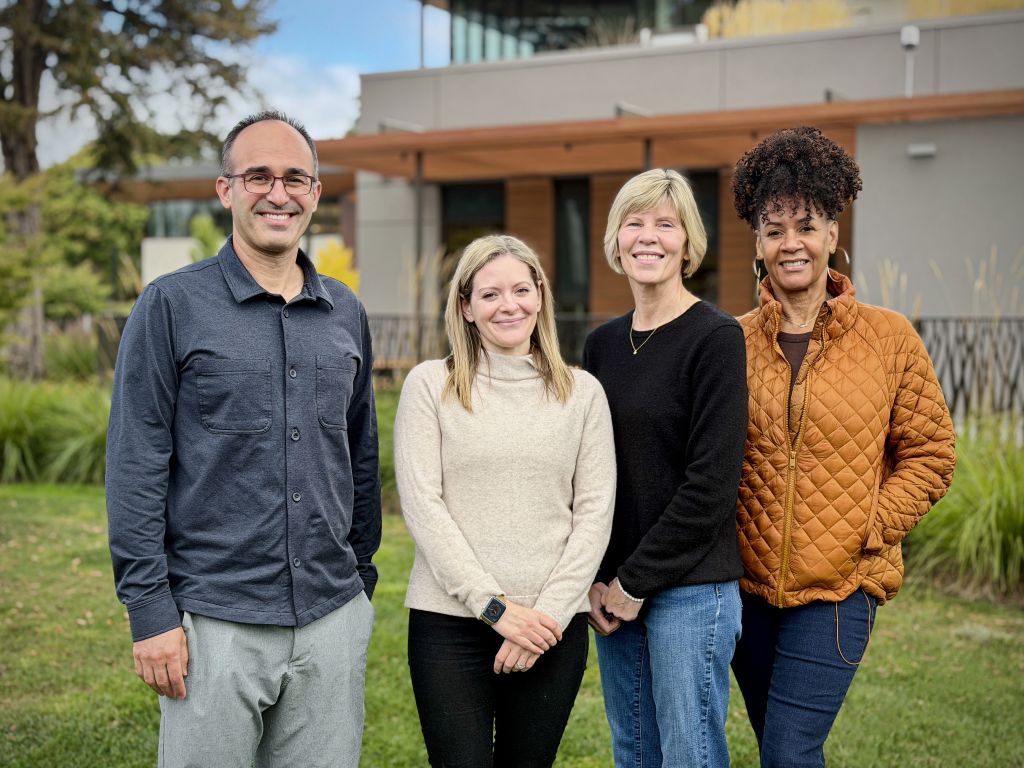650 Stories: An interview with Dale Perkins
Artist Dale Perkins became interested in art at an early age and attended the San Francisco Academy of Art on an art scholarship. After graduating, Perkins was drafted into the Army where he was appointed as the 6th Infantry Army artist, painting posters for training infantrymen and documenting Army life. Perkins also drew political cartoons for Bay Area newspapers and served as the Art Consultant for the Burlingame School District from 1960-1979. He’s lived in his Burlingame home since 1963, where he paints out of his home studio. We met in the kitchen of his home, where his original watercolors line the walls.
Where did you grow up?
Artist Dale Perkins became interested in art at an early age and attended the San Francisco Academy of Art on an art scholarship. After graduating, Perkins was drafted into the Army where he was appointed as the 6th Infantry Army artist, painting posters for training infantrymen and documenting Army life. Perkins also drew political cartoons for Bay Area newspapers, and served as the Art Consultant for the Burlingame School District from 1960-1979. He’s lived in his Burlingame home since 1963, where he paints out of his home studio. We met in the kitchen of his home, where his original watercolors line the walls.
Do you have memories of that time in the city?
Yes, going down to Fort Point, Fisherman’s Wharf, North Beach, that was really fun. We’d go down and play basketball and goof off. I remember playing basketball against former Mayor George Moscone and Boston Celtic Jim Loscutoff. While fishing on the pier, I saw the last attempt to escape from Alcatraz Island, hearing gunshots and viewing faint flashes of light.
What kind of student were you growing up?
My dad wasn’t around much, he was always looking for work or on the railroad. He used to work for the SP here that went through Burlingame. My mother did. That’s what kept me going. Someone saying ‘gee that’s nice’ or ‘I like it’ or in high school if they gave me 25 cents for them to do a poster for the campaign they were running for, that was great.
What kind of things were you drawing?
Doodling—I’m a cartoon diddler. I used to draw Popeye, Mickey Mouse, and I could draw them very well. I could draw Popeye right now. Harold Teen, but you don’t remember that. I was impressed by everything visual. Everything. The sky. It looks so weird and wild at different times. I found out when I fooled around with watercolor, it can be very emotional. I’m not a very emotional painter. I’m more representative. I love people and that’s one of my biggest interests and it’s one of my hardest bugaboos. I just struggle at it. I do a lot of caricatures, but I don’t do them like I’d like to do it. I’m fascinated by portraiture.
So your mother said you were talented?
Yeah, I got some encouragement. Only because all the kids in art were not there because they wanted to be in art. Like football players that wound up being Chicago Bears Hall of Famers, but they sat and they tried and fiddled around. I was more interested in it, so I worked harder.
Did you think it was something you could do for a living?
Never. I never looked that far ahead. I was just interested in it, and it just kind of happened. I knew people who wanted to be teachers and doctors, and I’m sure they became that. I just did things because I enjoyed doing them. I had no goal.
So what happened after high school?
I got a teaching credential, and a masters, and met my wife at SF State. I got five degrees by the end. I got married, got my first job in Petaluma, then I was drafted into the Army. Which was fun. I didn’t do very well in the Army color blind test. I’m blind in one eye and color weak in the other one. I have Amblyopia. It’s lack of vision in one eye.
So you had almost no vision in one eye?
I have peripheral vision in one eye. Like a coke bottle. I just can’t read the E on the eye test, but I can guess. I can see light and dark and motion, but not the clarity of shapes. But it’s not an excuse for anything. If you have it at birth, which I did, then you adapt and you take on depth perception. If I lost that vision in later life, I wouldn’t have gotten that depth perception. It didn’t affect my ability to do anything. I played sports, and the only thing it might have affected is my inability to do anything else. I couldn’t even pass the Air Force vision test, let alone the academics of the requirements.
But you have an amazing ability to accurately portray what you see.
Then the Army! They put me in the Army at Fort Ord, and somehow I wound up being the Army artist at Fort Ord, which was fabulous. I went to boot camp, and when I was in boot camp I met Leonard Nimoy, you know Spock? We became buddies. He was assigned to Special Services doing Theatre. I knew others that were with the 49ers and they were assigned to Sports. It’s amazing they did that. I’m not sure if they still do that. So I did art. I did sports sketches, like of the 49er people there. I loved the food, because we never had much money growing up. But in the Army there was tons of food and I liked it all.
After the Army what happened?
I started as a teacher, then they made me a counselor, put me in charge of student activities, then in the school play. That was all fun. I cherished everything and at that time Oakland was just like Burlingame. It was a dream come true. Then I was burning out. I had 41 in each class, and then I applied to a job in Burlingame as an art consultant. I got that job and moved to Burlingame to be an art consultant for the city. That job doesn’t exist anymore. That meant teachers had no training in art or music, so my responsibility was to work with all the teachers K-8 and go to every classroom teaching art and it was a dream job. So wonderful. I didn’t have to do the discipline, the mess, it was just like, ‘Oh Mr. Perkins is here.’ The kids were great, the teachers were wonderful, the parents, the principal, everybody. I would be teaching clay, drawing, painting, and torn paper, it was a delight. It was like being a visiting artist.
When did you move to Burlingame?
Deer used to come down the street. Racoons, skunks, lions. They still do. It was a happier and easier life for everybody. There were fewer people. Burlingame has almost not changed though. It’s a time capsule.
So let’s talk about your artwork. When people ask you what kind of artist you are what do you tell them?
That’s a good question but the first question they ask is ‘Are you in any galleries?’ If you’re not in any galleries, you’re not valid. If you’re a writer and you’re not published you’re nobody. It doesn’t make any difference how good you are. I was asked that so many times, I thought I better get in galleries. I did get some galleries but then I learned galleries want 50% of the sale. I’ve probably been in 30 top galleries over the years and I loved them all. But I understand they have to make a living. There were three that couldn’t pay the rent, and couldn’t pay me.
But what kind of artist do you tell people you are? A watercolorist? Painter?
Well, that’s changed over the years. My interest in cartooning was early. I had 15 years as a self-syndicated cartoonist for a variety of newspapers. But the good news is, I don’t want to be an editorial cartoonist. I had enough time to find that out. I’m not an activist. Some people can just do scribbles but they are strong on their activism and that communicates. That wasn’t me. But what is funny is that one of the kids I had in elementary school is now a cartoonist in the front page of the Chronicle every week. I was always doing watercolors and there are foundations that often had yearly events that wanted a flyer, and I found that I could do the flyer for them and they were delighted with it. Mostly I didn’t get paid for it, just donating it for almost 30 years, but I worked with the best people in the world. I worked with mayors, all kinds of wonderful people. I’ve also done hundreds of custom pen work or pen and watercolor of people’s homes. That’s really fun, and that lead to doing stores later. I love to paint cityscapes, landscapes, water, flowers.
What do you love about making art?
I don’t know. I’m fascinated by designers. Like your sweater! It’s good design. I’m fascinated by other artists, by beautiful flowers, plants, birds. I’m very limited. I’m tunnel-visioned.
What do you mean limited? It sounds like you find the whole world delightful.
Well I’m a visually-minded person. Some people are the opposite. Looking at things never gets old.
What do you think your life would be like if you couldn’t make art?
My whole family was breakmen or conductors on the railroad. I might have been that. You know how it is. How’d you end up being a writer?
I kind of couldn’t do anything else.
Well then I guess we’re bonded now.
For more inspiring stories featuring local community members and organizations, please visit our community page here.
Also, check out a wonderful piece on Dale we did back in 2014.
=

















